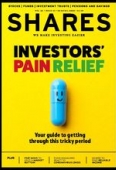Archived article
Please note that tax, investment, pension and ISA rules can change and the information and any views contained in this article may now be inaccurate.
Two things you must seek in fund managers’ latest reports

The start of April means fund managers should now being issuing their latest quarterly reports. Normally that wouldn’t be anything out of the ordinary, yet these reports will contain the first insight into how many funds have coped with the global market sell-off in late February and most of March.
Some funds and investment trusts have already issued commentary on their state of affairs. Others will have waited until the end of the first quarter before quantifying events.
WHAT TO LOOK FOR
Firstly, look for evidence of style drift. This is where a fund manager is doing something different to their usual approach in order to avoid being hit too hard or perhaps to chase a short-term opportunity to make up some lost ground.
Managers should really be sticking to one investment process, regardless of market conditions. Just look at Neil Woodford who was guilty of style drift and it cost him his business.
Really horrible market conditions typically cause investors to panic and make irrational decisions which they may come to regret later on. Fund managers can also succumb to fear, yet they
should be sticking to their investment mandate.
Scottish Investment Trust (SCIN) looks as if it has drifted from its usual value focus. As we reveal in this article, fund manager Alasdair McKinnon has made significant changes to his portfolio, moving from many value stocks into expensive defensives.
On one hand he is trying to protect shareholders in a very difficult time for the markets. On the other hand, by reducing exposure to retailers and banks, among others, he is putting the investment trust in a weaker place to benefit from any market rebound as the stuff he’s sold could be first to bounce back and the defensives he now owns might be left behind.
BEING TOO AGGRESSIVE
The second thing investors should seek in the latest batch of fund manager reports is evidence that portfolios might have been too aggressively positioned going into the market sell-off.
Witan Investment Trust (WTAN) had 12% gearing (borrowing) going into February’s market crash. The higher the gearing, the greater the chance of underperforming in a market downturn, which Witan has found out. Its net asset value fell by 24% over the sell-off versus a 15% fall in its global benchmark.
We reveal in this article how Temple Bar (TMPL) paid the price for having large stakes in companies experiencing big problems such as outsourcing provider Capita (CPI) and building materials group SIG (SHI) or ones which the market believes will struggle this year, such as Marks & Spencer (MKS).
After discussion with the trust’s board, fund manager Alastair Mundy sold more defensive holdings – seemingly the opposite approach to Scottish Investment Trust – to reduce borrowing levels. But he cannot be accused of style drift as the portfolio restructuring maintains his contrarian approach with a heavy focus on value and a recovery in UK domestics, having sold the least cyclical positions.
Important information:
These articles are provided by Shares magazine which is published by AJ Bell Media, a part of AJ Bell. Shares is not written by AJ Bell.
Shares is provided for your general information and use and is not a personal recommendation to invest. It is not intended to be relied upon by you in making or not making any investment decisions. The investments referred to in these articles will not be suitable for all investors. If in doubt please seek appropriate independent financial advice.
Investors acting on the information in these articles do so at their own risk and AJ Bell Media and its staff do not accept liability for losses suffered by investors as a result of their investment decisions.
Issue contents
Feature
First-time Investor
Great Ideas
Investment Trusts
News
- Market mood lifted by huge financial support but investors remain wary
- Why oil prices have plunged to 18-year lows
- Housing market goes into coronavirus hibernation
- Bill Ackman sets record straight after $2.6bn win
- Temple Bar dumps holdings after share price collapse
- Byotrol steps up in the fight against coronavirus
- Have capital preservation funds lived up to their name?

 magazine
magazine








